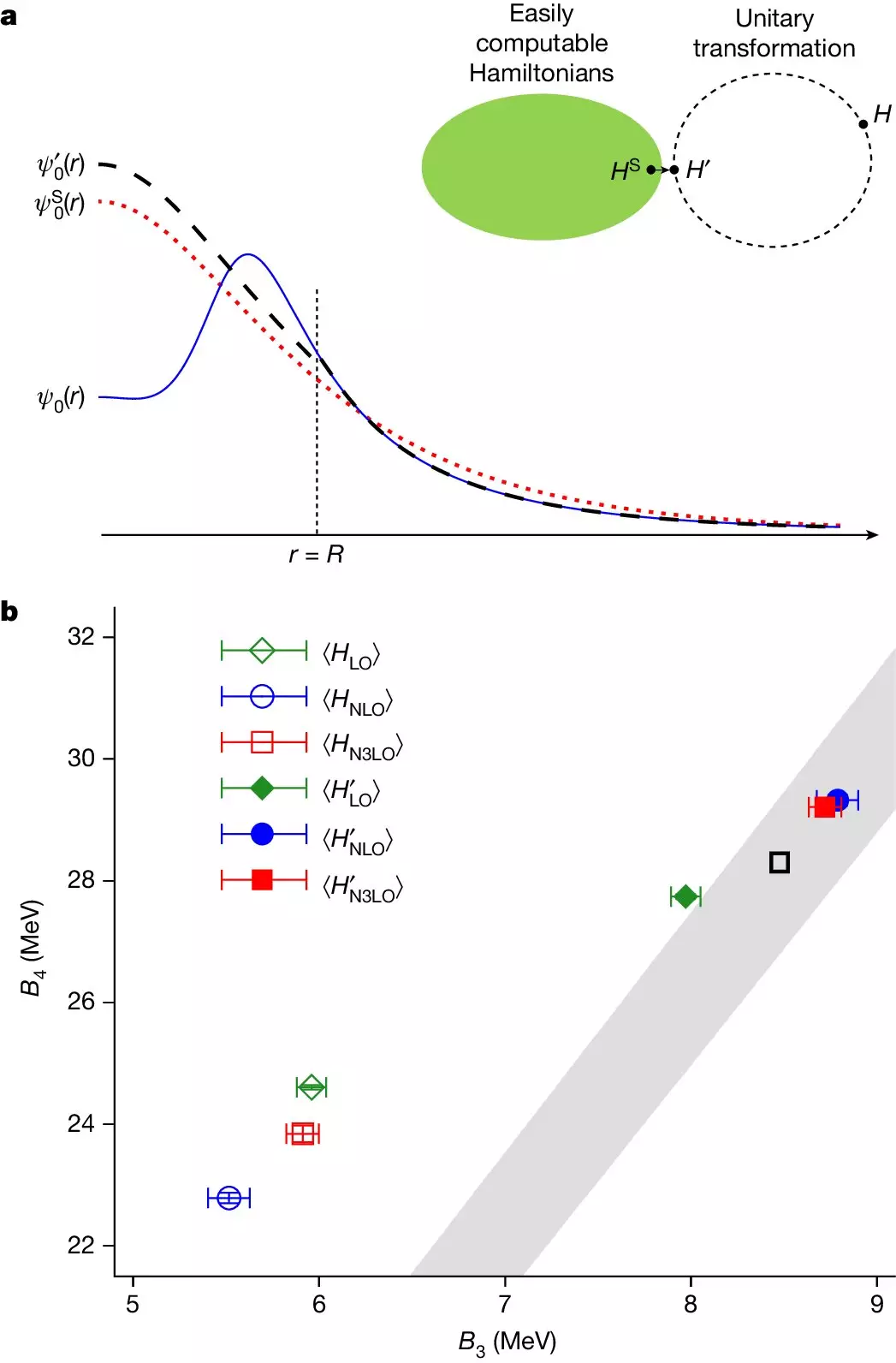Quantum physics and quantum chemistry rely heavily on strongly interacting systems for their research. One of the proven methods for investigating such systems is through stochastic techniques like Monte Carlo simulations. However, a common issue that arises when using these methods is the occurrence of sign oscillations, which can limit the accuracy of the results. To address this challenge, an international team of researchers from various countries collaborated to develop a new method called wavefunction matching.
Wavefunction matching involves mapping complex problems to simpler model systems that do not exhibit sign oscillations. By utilizing perturbation theory to account for the differences between these systems, researchers can overcome the limitations posed by the sign problem. Prof. Ulf-G. Meißner, a prominent figure in the field, highlights the successful application of wavefunction matching in calculating the masses and radii of atomic nuclei up to mass number 50, with results that align closely with experimental measurements.
Ab initio methods play a crucial role in studying atomic nuclei by describing complex systems from the ground up based on the interactions of their fundamental components. While these methods offer valuable insights into nuclear physics, they face challenges when dealing with complex interactions. Quantum Monte Carlo simulations, a subset of ab initio techniques, often encounter the sign problem due to the nature of positive and negative weights in calculations.
Wavefunction matching provides a solution to the sign problem by enabling researchers to replace high-fidelity interactions with more manageable ones without sacrificing the accuracy of the results. This approach allows for the application of standard perturbation theory to address small corrections, making it possible to achieve highly precise calculations for systems that were previously deemed intractable. Dean Lee, a respected physicist specializing in theoretical nuclear sciences, emphasizes the significance of wavefunction matching in overcoming computational obstacles in quantum many-body theory.
The research team successfully applied wavefunction matching to lattice quantum Monte Carlo simulations for a range of nuclear systems, demonstrating its versatility and effectiveness in improving predictive accuracy. While the initial focus was on quantum Monte Carlo simulations, wavefunction matching holds promise for various ab initio approaches beyond nuclear physics. Prof. Meißner highlights its potential applications in both classical and quantum computing, particularly in predicting properties of topological materials essential for quantum computing advancements.
The development of wavefunction matching represents a significant breakthrough in the field of quantum many-body theory. By addressing the sign problem and enabling precise calculations for complex systems, researchers are now equipped with a powerful tool to advance our understanding of fundamental particles and their interactions. The collaborative effort of international researchers highlights the importance of interdisciplinary cooperation in pushing the boundaries of scientific knowledge in quantum physics and quantum chemistry.


Leave a Reply